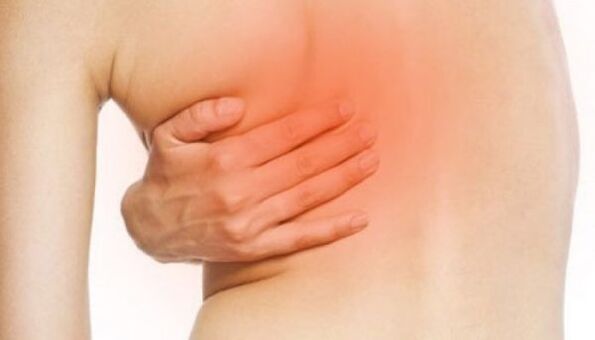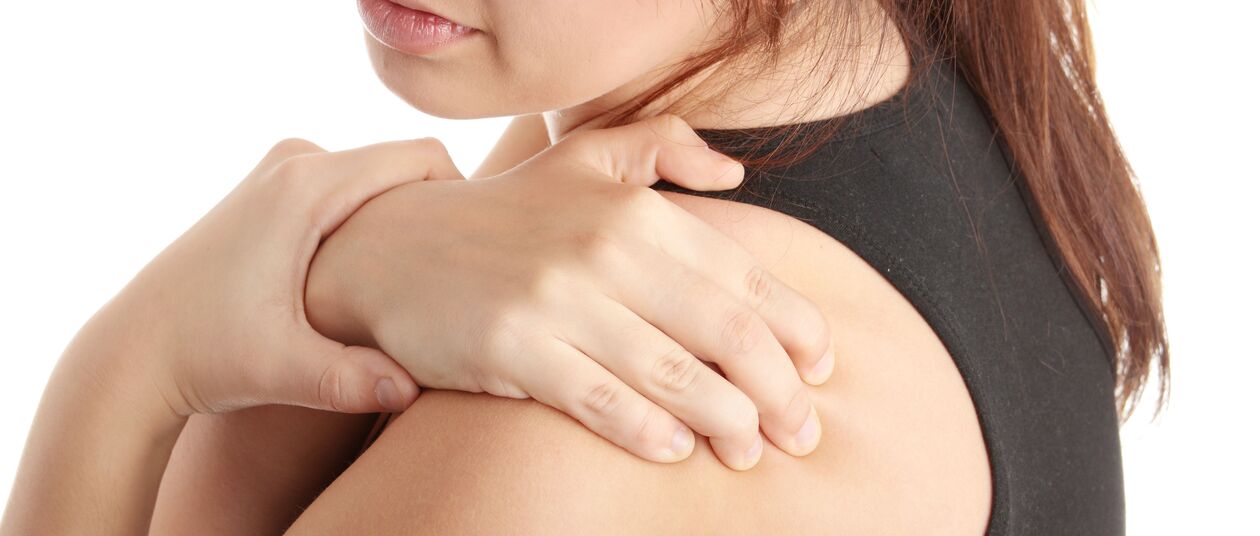Painful feelings under the shoulder blade - this symptom can occur in adults with musculoskeletal disorders or pathologies of the internal organs, as well as children who simply did not calculate physical activity or were in drafts.
Self-administration of analgesics for scapular pain is completely unacceptable: such pain sensations can be signs of life-threatening conditions.
At the same time, attention and often emergency medical care deserve not only acute pain but also dull pain under the left shoulder blade.
The nature of the pain and the accompanying symptoms indicate a particular disease. However, only a qualified physician, based on the patient's complaints, can understand which organ damage caused the pain, prescribe the necessary diagnostic examination, and provide emergency assistance if necessary.
Causes of pain under the left shoulder from behind

The proximity of the lungs, heart, and spine, as well as the extensive network of nerve fibers, expand the list of possible causes of pain under the shoulder blade. In this case, each disease is characterized by other specific signs, and the nature and duration of the pain sensation also vary.
Pathology of the musculoskeletal system and nerves
Diseases of the spine and back muscles are common causes of pain under the left shoulder blade. The pain of such diseases is often one-sided.
- Osteochondrosis - the development of osteophytes causes pain in the chest or cervical spine on the left or right side, starting at the neck and upper back and ending with irradiation of the arm. The pain does not go away at rest, it is often lingering but tolerable.
- Intervertebral neuralgia - accompanied by intense pain that spreads throughout the intercostal space and is exacerbated by breathing, turning, sneezing / coughing. Often, in the case of neuralgia, the sensitivity of the skin also changes over the source of the pain. Neuralgia causes paresthesia in the form of goosebumps, while numb pain under the left scapula often occurs in heart attack, angina pectoris.
- Scapular rib syndrome - a "reward" for hard physical work or long-term activities (office workers). People complain of non-intense, dull pain that localizes between the neck and shoulder and radiates under the scapula.
Important! Causes of pain under the left scapula from behind to back, which radiate to the arm and are of a distinctive nature - osteochondrosis and angina pectoris - have distinctive features. For angina pectoris, the pain lasts for 30 minutes, for osteochondrosis - for several days. In addition, nitroglycerin or other heart medications stop the attack of angina pectoris.
Sometimes the pain under the shoulder blade is caused by inflammation of the scapula (simultaneous stiffness of movements and tension in certain muscle groups), injuries to the shoulder blade (acute pain, always falling, hitting, etc. ) or oncology (pain may occur) intermittently, not intensely). Tuberculosis of the bones, namely shoulder defeat, cannot be ruled out.
Cardiovascular diseases
Cardiac pathology is one of the most dangerous that can be diagnosed when a patient complains of pain under the shoulder blade. In this case, the pain of heart disease does not always start on the front surface of the chest (behind or to the left). The cause of pain under the left shoulder blade in the heart area may be:
- Angina pectoris - the pinching pain behind the sternum extends below the left scapula and the collarbone, the jaw and the arm. At rest, the intensity of the pain decreases, but the change in body position does not bring relief. In the case of scapular-costal (vertebrogenic) syndrome, the situation of increased pain is radically opposite. The attack of angina pectoris is compensated by the intake of nitroglycerin, with vertebral pain the manual therapy is excellent.
- Myocardial infarction is an acute, increasing heartache with characteristic left irradiation (including under the scapula) that is not stopped by cardiac glycosides. The patient experiences severe fear, which is not the case with damage to the spine and nerve fibers. Immediate hospital treatment is required!
- Hypertensive crisis - often accompanied by depressing heartache radiating to the left shoulder blade. The cause of the pain can be easily determined by measuring the a / d.
- Pericarditis - with this disease the pain is reduced at rest and when the torso is tilted forward. Pain occurs in the anterior heart area, radiating below the scapula, but not as intense as in acute myocardial ischemia (angina pectoris, heart attack).
- Detachment, the aortic aneurysm, is a dangerous condition characterized by throbbing pain under the shoulder blade. The rapid increase in pain requires an urgent medical team.
Important! Left is numbness in both ischemic heart disease (angina pectoris, heart attack) and cervical osteochondrosis.
Important! Vegetative-vascular dystonia often presents a symptomatic picture similar to cardiac pathology. However, the detection of a serious condition is clearly sham (psychogenic factor), the patient often experiences a feeling of nervousness, tremors, fever, dumplings in the throat.
Respiratory diseases
Pain under the left shoulder blade can cause the following lung diseases:
- Pneumonia - only pains when the inflammatory focus is near the pleural membrane. Low-intensity painful feelings occur periodically, have a point-like localization, and are exacerbated by respiration.
- Pleurisy - unlike pneumonia, the pain is sharp, stabbing. Its intensity depends on the depth of breathing.
Concomitant pulmonary symptoms following inhalation under the left scapula are shallow, rapid breathing, shortness of breath, fever. Hyperthermia can also occur with pericarditis. Mild temperature rises are extremely rare in severe neuralgia and myositis.
Important! Unlike heart disease, with respiratory pathology, pain is accompanied by night sweats and coughs (in the early stages of pneumonia and pleurisy - dry).
Pathology of the gastrointestinal tract
Sub-shoulder pain is often accompanied by diseases of the gastrointestinal tract. In this case, the symptom picture is as follows:
- Peptic ulcer - severe cutting pain is always associated with food intake (occurring before or immediately after eating), with the non-specific localization of the ulcerative process (the back wall or part of the heart) radiating towards the scapula. The pain is relieved after vomiting and taking antacids. Perforation of the ulcer is associated with increased pain (such as cutting with a knife), the patient presses his foot to his stomach and covers it with his hand.
- Inflammation of the pancreas - accompanied by severe belt pain (including under the left shoulder blade). The attack is always accompanied by eating errors (fatty, salty, fried foods, alcohol, starvation). Vomiting does not bring relief.
Important! The pathology of the gastrointestinal tract, which caused pain under the scapula on the left side, is accompanied by other characteristic symptoms - bloating, indigestion, vomiting, belching.
Diagnosis of scapular pain
When collecting a medical history, the doctor pays attention to the relationship between pain and physical activity, food intake, stress, and identifies concomitant chronic and recent illnesses.
Assessing the nature of the pain, the presence of certain symptoms characteristic of diseases of various organs, allows you to narrow the range of causes to a specific system of the body - the heart, lungs, musculoskeletal system, gastrointestinal tract. Preliminary diagnosis is confirmed by the following tests:
- heart - a / d measurement, ECG, echocardiography and Doppler scanning;
- lung x-ray;
- spine - X-ray of the neck and chest region, CT or MRI.
A more detailed examination of the damaged organ may be needed in the future. Only then will treatment for the identified disease be prescribed.
When and which doctor should I go to?

Depending on the intensity and nature of the pain below the shoulder and the accompanying symptoms, you should see a doctor:
- urgent emergency care - acute pain with increasing intensity and rapid deterioration of the general condition;
- traumatologist - acquiring an injury that causes pain syndrome;
- cardiologist - with concomitant chest pain (permanent or intermittent), shortness of breath, cyanosis;
- neurologist, orthopedic - pain under the left shoulder, exacerbated by lifting the arm, there is a clear link between the occurrence of pain and physical activity, a previously diagnosed degenerative pathology of the spine;
- gastroenterologist - there is an association between pain and food intake, there are signs of other gastrointestinal diseases (nausea, vomiting, etc. );
- pulmonologist - pain under the shoulder blade is accompanied by cough, shortness of breath;
- therapist - the pain occurs for no apparent reason, permanent or temporary.
The therapist often diagnoses a trivial VSD and finds confirmation of an acute surgical pathology or oncological process. In the future, the doctor will appoint a consultation with a specialist with a narrow profile.
Preliminary treatment regimens
Depending on the diagnosis, your doctor will choose an effective treatment to treat the underlying disease. An important point of complex therapy is the elimination of pain syndrome:
- In the case of neurological pain, strong analgesics are most commonly used;
- Spinal and muscle pathology requires non-steroidal anti-inflammatory drugs;
- Heart disease - pain syndrome requires nitroglycerin (does not help with heart attack), Validol only has a reflex effect and does not improve the condition of the heart muscle in ischemic disease in any way;
- If gastrointestinal disease is suspected, antispasmodics (in case of ulcers) should be used.
Only by eliminating the underlying disease does the patient get rid of the pain under the shoulder blade. In acute cases, urgent hospitalization and intensive care may be required.
The radicality of treatment depends on the nature of the disease and the duration of the disease, so a doctor should be consulted at the first appearance of painful symptoms. This not only determines the outcome of the disease, but also increases the chances of a full recovery.
In severe cases, timely medical care saves the patient’s life.























